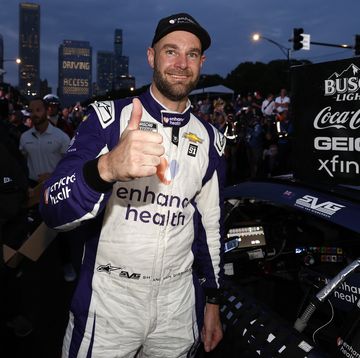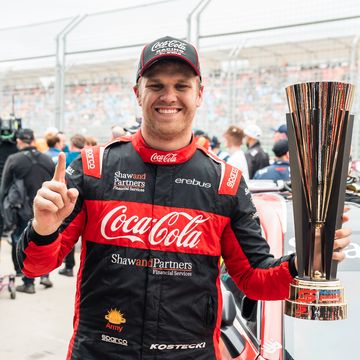NASCAR thunder bounced off the skyscrapers of Chicago for the first time Saturday, and the world as we knew it changed.
To ponder this scene even a decade ago would be to stretch the imagination: Brightly colored, high-horsepowered race cars pounding the asphalt and concrete of Michigan Avenue and Columbus Drive, tires screaming and brakes lighting up in 90-degree turns. All the while, visitors in town for the city’s museums, deep-dish pizza and other tourist magnets continued about their business, the NASCAR noise just another part of the day.
What is NASCAR anymore? Is it an event with a race wrapped in the middle? Is it a race with an event attached? Is it a 21st-century amalgam of entertainment, sport and business?
In Chicago on this odd weekend, it seems to be all of the above—a mishmash of light and color and noise, of national-level recording artists sharing the stage with drivers who have turned Michigan Avenue into a speed proving ground.
“This is all entertainment at some point, right?” said former Cup Series champion Chase Elliott. “So yeah, I do think that this has been looked at like that, and I think that’s good. There’s nothing wrong with that. Somebody asked me last weekend what it would take to make this a successful race, and I don’t think it has to be a last corner pass for the win. If that happens, great—somebody hit a home run. But I think if the environment is exciting, everybody does their job off the race track, it’s a fun place to hang out and everybody here in town wants to be here – we make this the event here in Chicago this weekend, whether the race is a great show or not, I think it’ll be a success.”
NASCAR already is surveying the landscape for other possible street-course races as it builds more adventurous schedules for the future.
The competition challenges of that approach became clear Saturday afternoon as several Cup Series drivers damaged their cars in meetings with the concrete barriers defining the narrow track.
Veteran driver Kevin Harvick, in his final season as a full-time driver, has long been an advocate for innovation in scheduling.
“I think you have to start somewhere and you have to step out of that box and do things differently, and I think we have a lot of room to still explore and do things and show our product off in different cities to different people,” Harvick said. “I think they told us that over 80 percent of the fans here this weekend will be people who have never watched a NASCAR race. If you’re going to grow the sport, you’re going to have to do stuff like this.”
Elliott hasn’t endorsed dramatic, widespread change but said experimentation is positive.
“I think it is a good thing, just from the standpoint that they’re willing to try new things,” Elliott said. “What I think is really important—you’re going to have to look in the mirror some days and know and be willing to be honest with yourself that, hey, that didn’t work, and we don’t need to just keep beating that horse. … I hope it goes well and if it doesn’t, that’s fine, too. We tried and we’ll look for the next event or the next thing that we can go and do as an industry to switch it up.”
Harvick suggested events beyond NASCAR classics like the Daytona 500, Southern 500, Coca-Cola 600 and the Bristol Motor Speedway night race are fair game.
“I’d make sure that the markets and racetracks are held accountable to have the proper amount of people in the seats,” he said. “If it’s not going the way it should, move them around.”
Welcome to the new NASCAR—a moving target.














